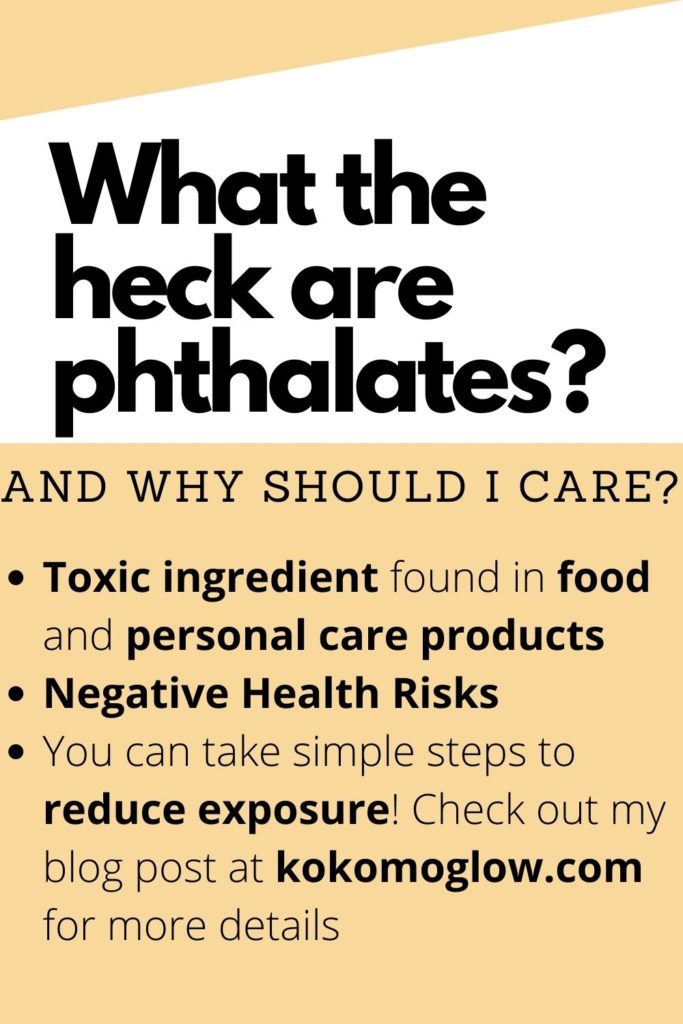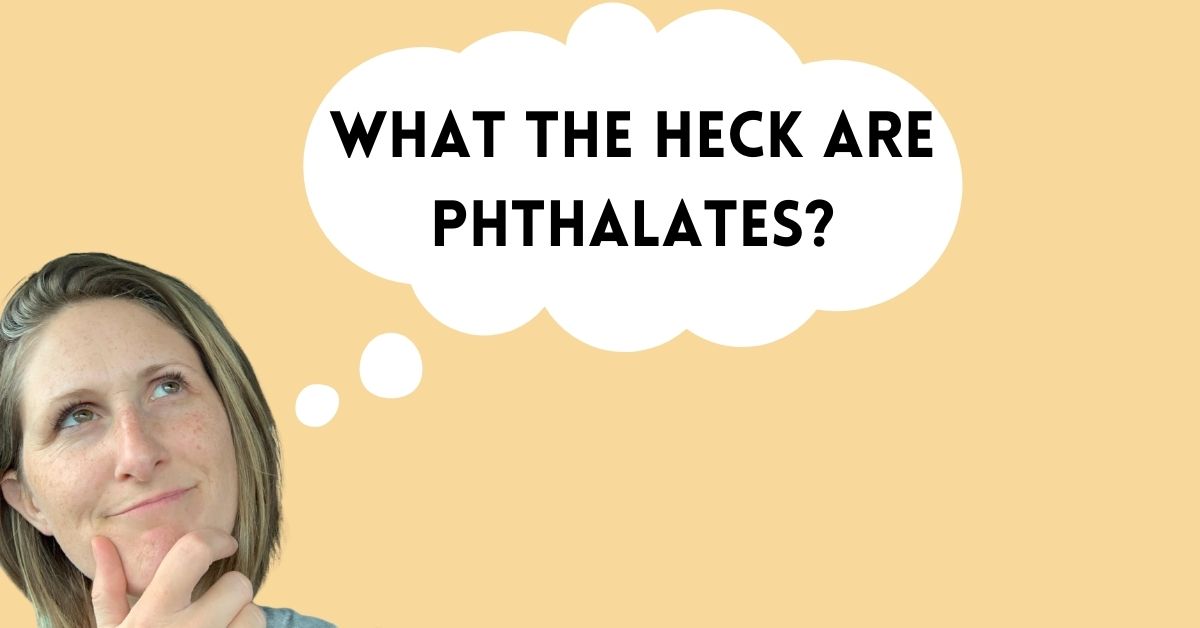Toxic Ingredient: Phthalates
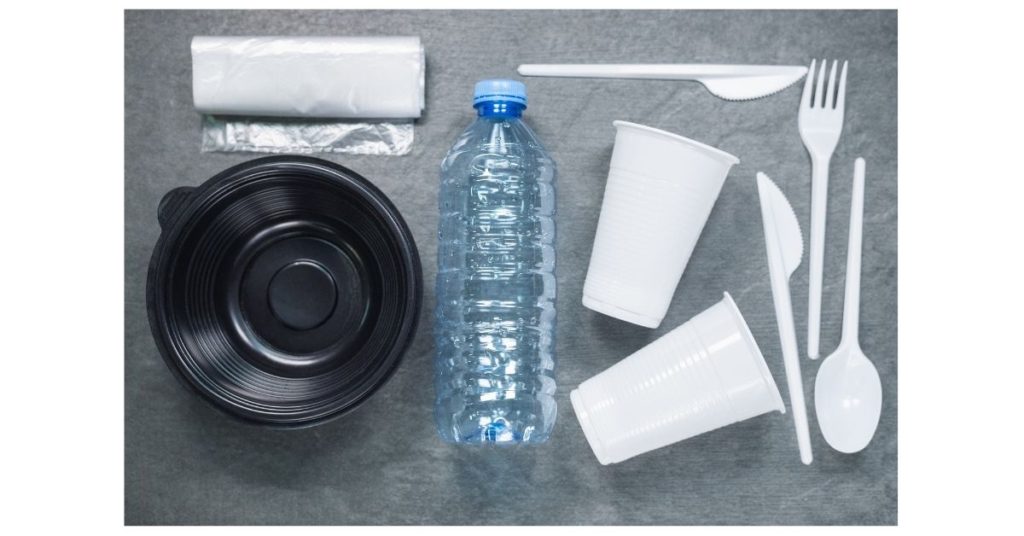
What the heck are Phthalates and why should I care?
When switching over to non-toxic products, I heard to avoid products with phthalates because of the potential negative health effects. I wanted to investigate why this was important. If I research a topic and understand the why behind avoiding an ingredient it motivates me to make healthier choices. Knowledge is power!
I’ll share a simplified version of what I learned about phthalates so you know what it is, the dangers, what products phthalates are in, and how to reduce your exposure.
Phthalates Pronunciation
Starting with the basics I wanted to ensure I was actually saying the word correctly, which I wasn’t! The pronunciation is THAL-eights.
Phthalates Meaning
Phthalates are synthetic chemicals added to plastics to make them soft, flexible, and durable. The chemicals are also used as a solvent and binding agent in cosmetics and personal care products. Fragrance can also contain these chemicals to make the scent last longer.
Here is how the CDC defines phthalates:
“Phthalates are a group of chemicals used to make plastics more durable. They are often called plasticizers. Some phthalates are used to help dissolve other materials. Phthalates are in hundreds of products, such as vinyl flooring, lubricating oils, and personal-care products (soaps, shampoos, hair sprays).”
CDC
Phthalates Danger

There are many studies out there that report on the dangers and negative health risks with phthalate exposure. I highlight a few studies below that report on phthalates having the following negative health effects:
- Asthma
- Eczema
- Autistic-like behavior
- Cardiovascular disease
- Infertility
- Decrease in male reproductive health
- Endocrine Disruptor
Childhood exposure can start in utero since the chemical can transfer from mother to fetus. Women also have a higher exposure to phthalates due to personal care products. Young children may have a higher exposure rate since they love putting anything they can find in their mouth. This NCBI reports the risk of asthma, eczema, and autistic-like behavior with childhood exposure:
“Five studies from Asia, Europe, and the US suggest that childhood exposure to di-2-ethylhexyl phthalate (DEHP) and butylbenzyl phthalate (BBzP) may increase the risk of allergic diseases including asthma and eczema. Six studies from four different prospective cohorts report that gestational BBzP, DEHP, di-butyl phthalate (DBP), and di-ethyl phthalate (DEP) exposures are associated with alterations in infant/toddler physical development as well as parent-reported externalizing, internalizing, and autistic-like child behavior.”
NCBI
Science Direct summarizes the following from their studies:
- Exposure to phthalates may increase the risk of cardiovascular diseases and infertility, some of the modern age pathologies.
- Phthalates are associated with a decrease in male reproductive health, e.g. Testicular Dysgenesis Syndrome.
The National Institute of Environmental Sciences lists phthalates as an endocrine disruptor. Here is how NIEHS describes an endocrine disruptor:
“Many chemicals, both natural and man-made, may mimic or interfere with the body’s hormones, known as the endocrine system. Called endocrine disruptors, these chemicals are linked with developmental, reproductive, brain, immune, and other problems.”
NIEHS
Now that we know some of the dangers of phthalates, let’s review examples of how we are exposed to the chemicals.
Phthalates Examples
Phthalates are found pretty much everywhere and in every home. Exposure comes in various forms and includes:
- Ingestion
- Breathing in particles
- Skin absorption
Phthalates in Food + Drinks
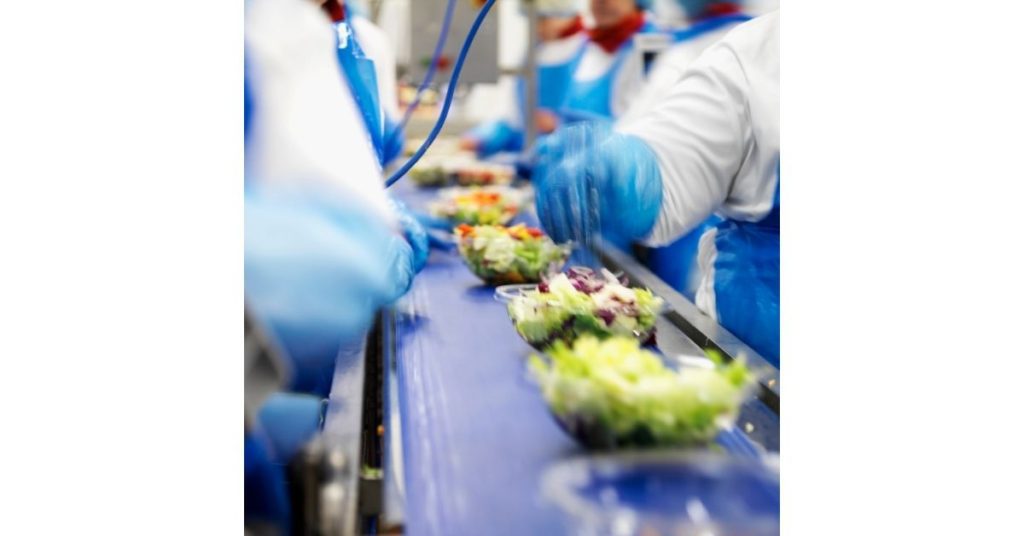
Phthalates in food is one of the main ways it enters our body. It’s not an ingredient in food, rather it ends up being added if the packaging, food handling equipment, or food prep uses materials that have phthalates. Some examples are gloves used to prepare foods, or PVC piping used for milk production and transportation.
The EHS (Environmental Health Perspectives) did a study and found that those who ate fast food were exposed to 39% more phthalates than those that did not consume.
The Environmental Health Journal found the highest amount of food exposure with meats, oils and fats, and cream.
Phthalates in Cosmetics and Personal Care Products

Phthalates are still present in cosmetics found in the United States even though the European Union has banned them. You can find the ingredients in lotions, hair spray, hair gel, nail polish, deodorants, fragrance/parfum, cleansers, sanitary pads, eyelash glue, and the list goes on. This also includes baby care products.
According to the CDC, “Adult women have higher levels of metabolites measured in urine than do men for those phthalates that are used in soaps, body washes, shampoos, cosmetics, and similar personal care products.”
Children Hand-To-Mouth Exposure to Phthalates
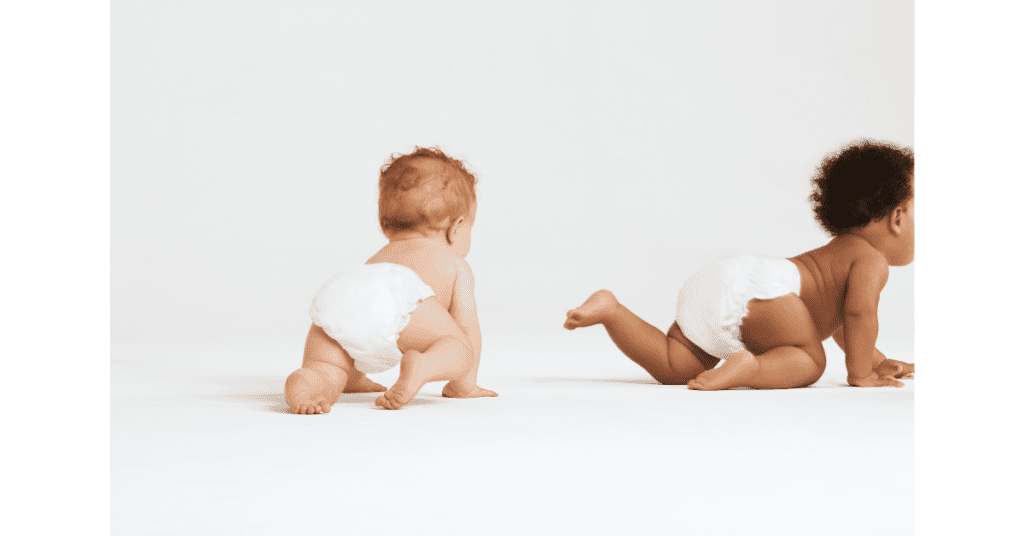
In addition to children being exposed to phthalates in utero, and in baby care products, they are also exposed when putting objects and hands in their mouth.
Science Directs highlights the following in their study:
- Plasticizers were frequently detected in children’s hand wipes, dust, and urine.
- The metabolite of BBP was higher in children who lived in homes with 100% vinyl floors.
Other Phthalate Examples
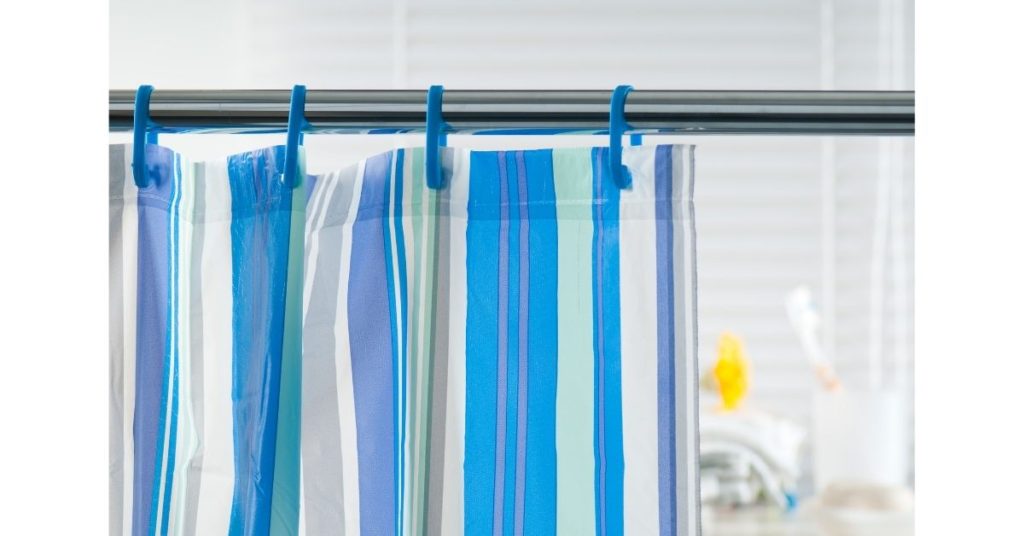
There are hundreds or products that contain phthalates and here are some other examples:
- Shower curtains
- Vinyl floors
- Detergents
- Paints
- Varnishes
- School gear: Plastic lunchboxes, binders, backpacks
- Rainwear
- Purses
- Belts
- Shoes
- Medical equipment like IV bags
- Plastic bags
- Garden hose
- Plastic straws
- Plastic dinnerware
How to Reduce Phthalate Exposure
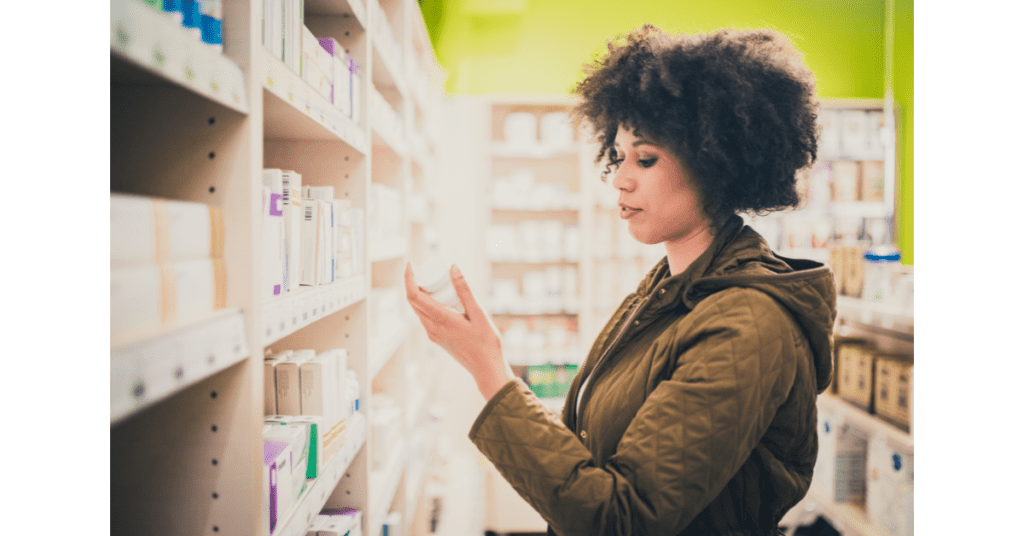
What I discovered is exposure to phthalates are unavoidable but there are choices you can make that will reduce exposure for yourself and your family. Here are some easy action steps you can start taking:
- Read the ingredient lists!
- Do not buy anything with fragrance or parfum listed as an ingredient.
- Do not buy anything with Phthalates listed as an ingredient. The ingredient list may contain an acronym, look for this:
- DBP (dibutyl phthalate)
- DINP (diisononyl phthalate)
- DEP (diethyl phthalate)
- DEHP (di-2-ethylhexyl phthalate)
- DMP (dimethyl phthalate)
- BBP (benzyl butyl phthalate)
- DNOP (di-n-octyl phthalate)
- DIDP (diisodecyl phthalate)
- Choose products labeled “phthalate free”
- Eat out less, and make meals at home. Bonus this can save a lot of money!
- Try to purchase fresh foods instead of canned and packaged products
- Animal products contain more phthalates so try and have more meatless meals .Give Meatless Mondays a try!
- Do not buy plastic that has “3” listed on the bottom of the product. 1, 2, 4 or 5 are better options.
- Do not buy PVC or vinyl shower curtains, look for cotton or linen.
- Avoid vinyl flooring if possible, especially if you have children crawling around the floor.
- Avoid buying products with a prop 65 label.
- In your kitchen, use glass instead of plastic and do not microwave food items in plastic.
- Avoid plastic toys for your babies and toddlers that like to put things in their mouth and instead look for wood toys.
- Do not buy air fresheners, instead try using essential oils or open the windows if it’s a nice day and turn on those fans to get the air circulating.
- Vacuum regularly especially if babies are crawling on the floor.
- If being treated for a medical condition, ask to see if they have phthalate-free medical devices.
- Vote with your dollar! Spend your money on products that do not contain phthalates, and hopefully other companies will change their ways and create phthalate free products.
What Has Been Done to Reduce Exposure?
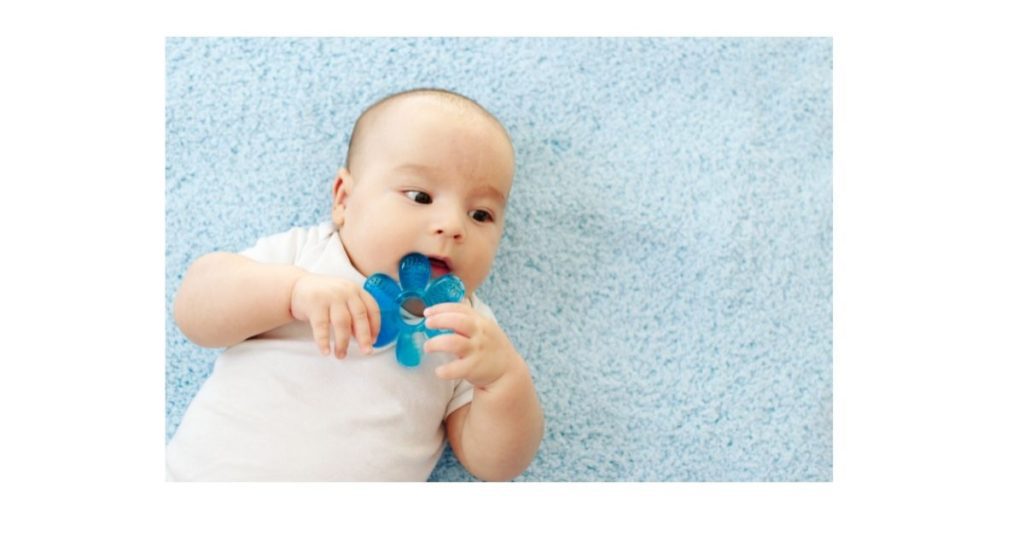
The United States has taken action on reducing our phthalates exposure such as implementing the Consumer Product Safety Improvement Act of 2008. Here is what Congress prohibited:
“In the Consumer Product Safety Improvement Act of 2008 (CPSIA), Congress permanently prohibited children’s toys or child care articles containing concentrations of more than 0.1 percent of three types of phthalates: di-(2-ethylhexyl) phthalate (DEHP); dibutyl phthalate (DBP); or, benzyl butyl phthalate (BBP). (Computed for each phthalate individually.) A child care article is a consumer product that is designed or intended by the manufacturer to facilitate sleep or the feeding of children age 3 and younger, or to help children age 3 and younger with sucking or teething.
CPSC
States have also set regulations when it comes to phthalates.
For example California requires products to have a Prop 65 warning and there are six phthalates on the prop 65 list, and they list these concerns with each ingredient:
- BBP (butyl benzyl phthalate) during pregnancy may affect the development of the child.
- DBP (di-n-butyl phthalate) during pregnancy may affect the development of the child, and may also harm the male and female reproductive systems.
- DEHP (di(2-ethylhexyl)phthalate) may increase the risk of cancer, and may harm the male reproductive system. Also, exposure to DEHP during pregnancy may affect the development of the child.
- DIDP (di-isodecyl phthalate) during pregnancy may affect the development of the child.
- DINP (diisononyl phthalate) may increase the risk of cancer.
- DnHP (di-n-hexyl phthalate) may harm the male and female reproductive systems.
Washington, Vermont, and Maine also take action to reduce phthalate exposure.
There have been numerous petitions sent to the FDA to limit the phthalates when it comes to food. In order to take action in to their own hands some companies are already making the changes like Annie’s Homegrown Macaroni and Cheese. The’ve made it a goal to be phthalate free with their food processing equipment.
Final Thoughts
Well by the end of this article I could finally spell phthalates correctly, ha! Phthalates are in hundreds of products and at this point in time we really can’t avoid being exposed to these chemicals. They are added to plastics to make them more flexible, and durable and as a solven and binding agent. They can be found in cosmetics, foods, and in common household items. However there are simple action steps you can start taking today to reduce your exposure, like don’t buy products with “fragrance” listed as an ingredient, look for products listed as phthalate free, and cook at home more.
It’s especially important for pregnant women to avoid phthalates since it can transfer to baby, and to try and reduce exposure for your children since there are studies about the negative health effects it can have on children such as asthma, neurological issues, and eczema. One of the best things we can do is to vote with our dollar and support companies and purchase products that make an effort to be phthalate free and in general strive to provide products that do not include ingredients with negative health effects. If we do this, I hope we see more and more companies provide safe products to consumers.
I hope you found this information helpful, and it motivates you to try and avoid phthalates. Would love to hear your thoughts in the comment below.
Cheers to making healthier choices one step at a time!
-Brekke
